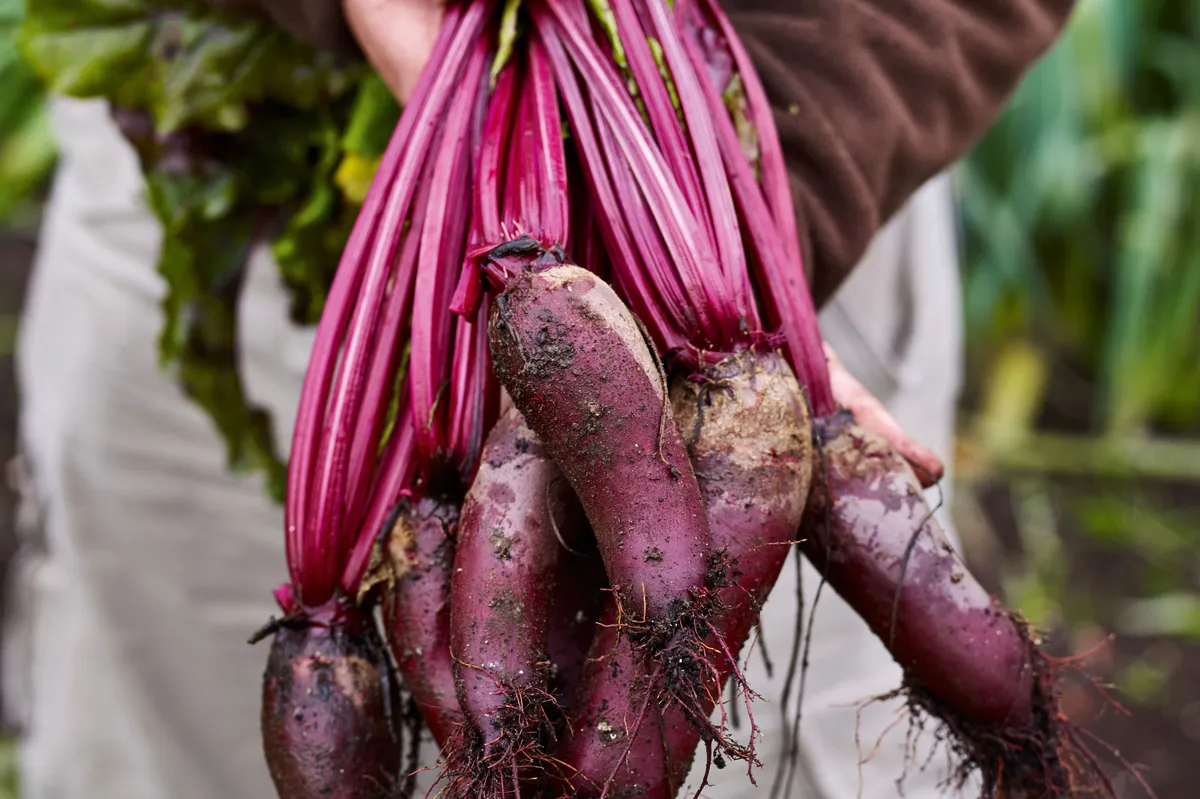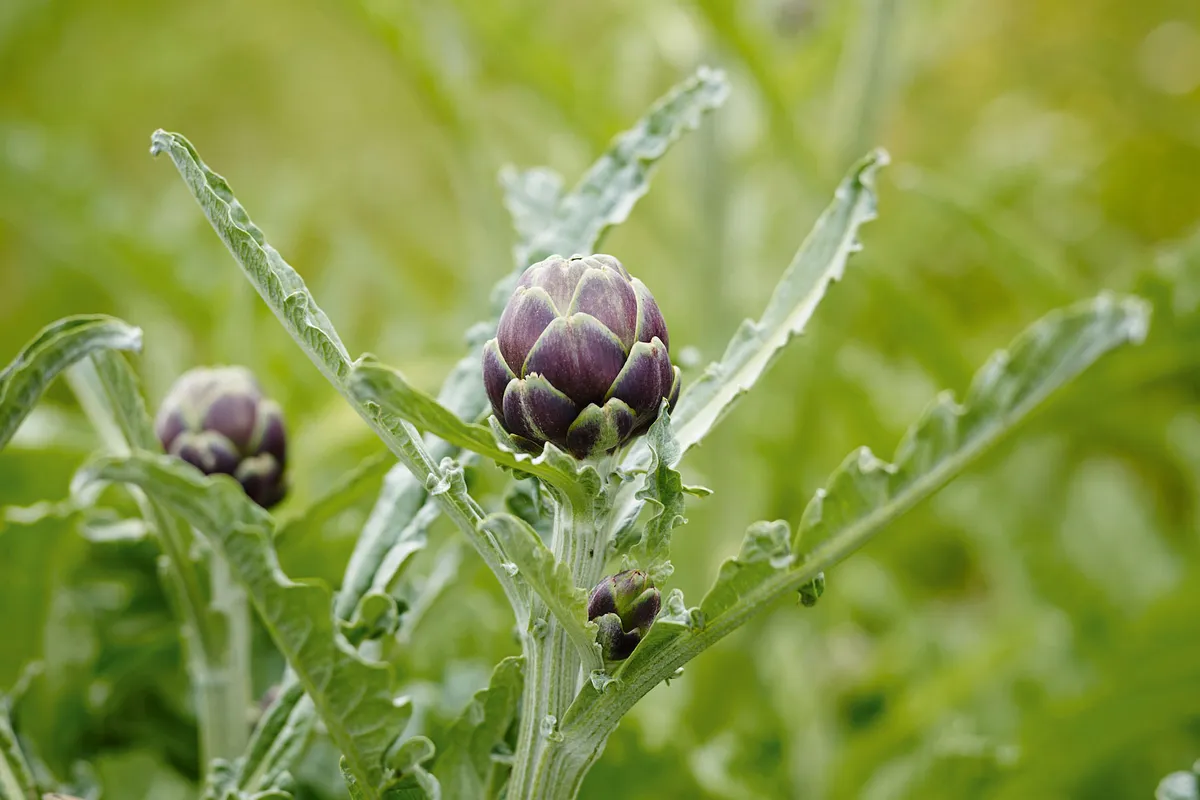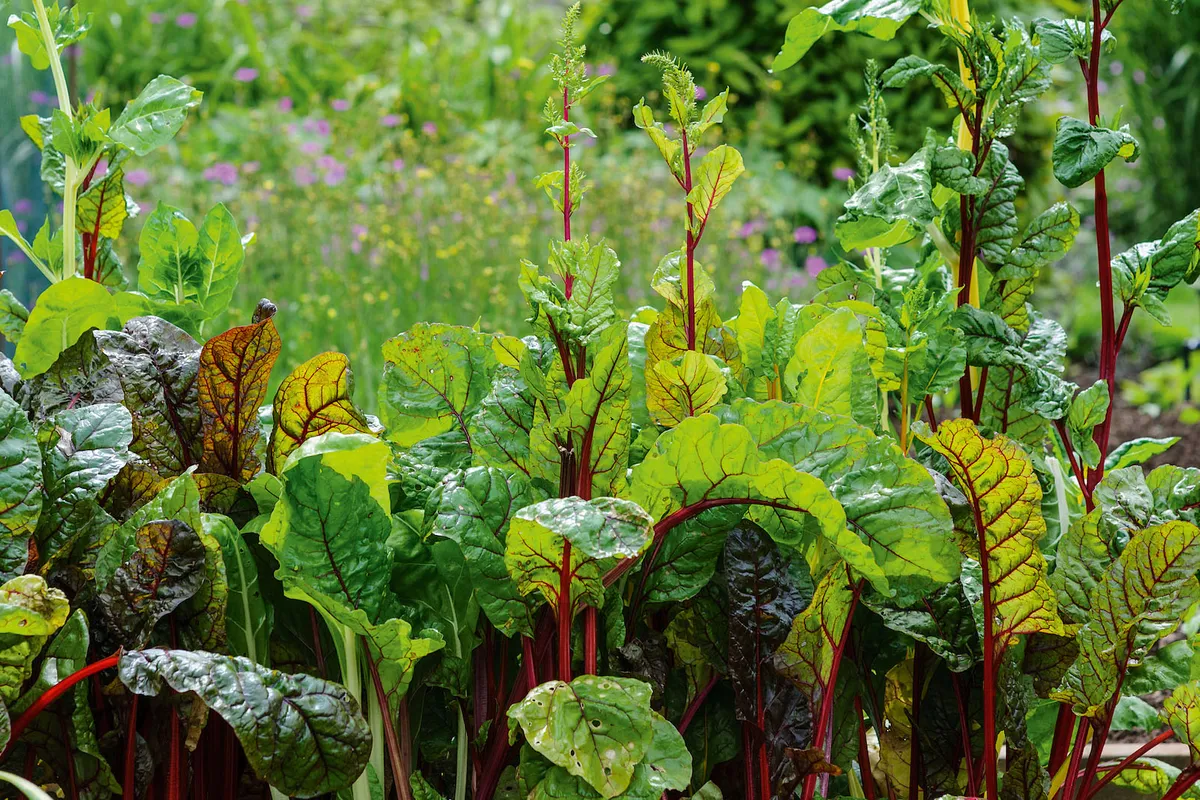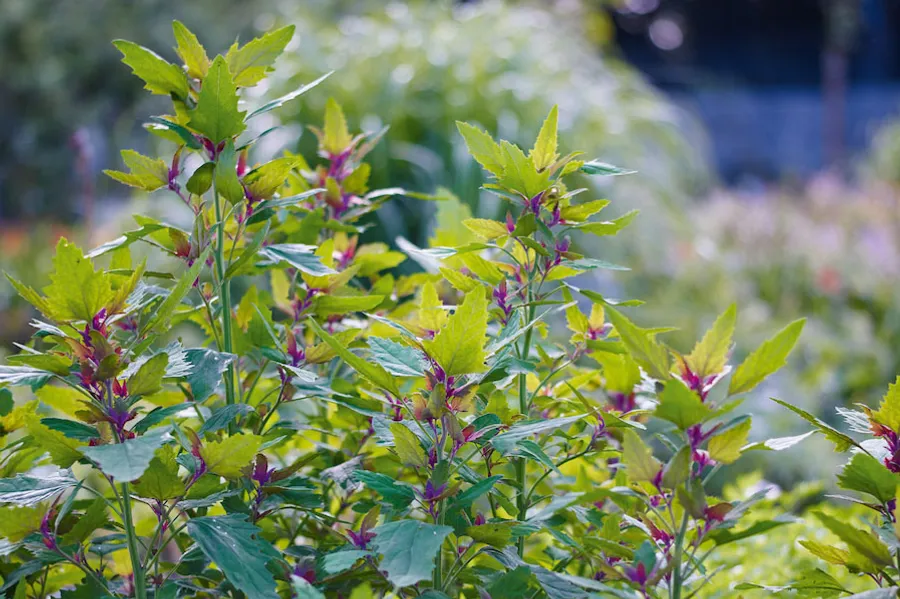Senior kitchen gardener Ollie Hutson is the driving force behind the food-focused philosophy of The Pig Hotel Group. Describing its hotels as restaurants with rooms, the chain promises seasonal, British-grown produce sourced as locally as possible – ingredients come from within a 25-mile radius of each hotel, if not from its own kitchen garden.
The Pig doesn’t claim to be self-sufficient, but tries to ensure that every plate is touched by the kitchen garden in some way. At the start of the season, Ollie gets together with the head gardeners of each property to discuss cultivars they’ve grown or would like to grow in the garden. Each crop is put in to three categories: more, less or not at all.
There is diversity across The Pig’s gardens, and each has its own unique aspect. The orchard, for example, is one of the main attractions of The Pig near Bath. After three years of restoration, it now produces a mixture of interesting Victorian and 20th-century apple cultivars, including the cider apple ‘Kingston Black’, and dessert apples ‘Cox’s Orange Pippin’ and ‘Beauty of Bath’.
Although responsibility for the gardens starts and finishes with Ollie, he’s keen to stress that the gardens don’t belong to him: “I’m just the steward for a while, keeping them in a good state for the people who come after me and doing justice to the people who owned them before.” Below are 18 plants that feature in The Pig's kitchen garden.
1
Beta vulgaris ‘Cylindra’ (beetroot)

With its cylindrical-shaped, crimson-red roots, this beetroot has a fantastic earthy flavour with very soft flesh. 25cm.
2
Rosmarinus officinalis ‘Green Ginger’ (rosemary)

Ollie’s favourite rosemary in the kitchen garden. These upright plants have a strong aroma of both rosemary and ginger. It makes for a fantastic infusion with gin. 1m. AGM*.
3
Cucurbita maxima ‘Red Kuri’ (squash)

The early maturing cultivar is almost as valuable as an ornamental as it is tasty. The skin is bright orange and the flesh is yellow. Ideally this variety should be cured for one to two months. 60cm.
4
Allium sativum ‘Early Purple Wight’ (garlic)

This is a soft-neck cultivar producing relatively small purple-tinged bulbs that can be harvested from the kitchen garden as early as May. 30cm.
5
Brassica juncea ‘Osaka Purple’ (Japanese giant red mustard)

Ollie’s favourite mustard, which produces round leaves with a mild mustard-like spice contrasting well with the sweet, crunchy stems. Be careful though, the leaves have a tendency to grow too large – seemingly overnight. 30cm.
6
Vicia faba ‘Crimson Flowered’ (crimson-flowered broad bean)

This cultivar of broad bean is probably best planted in any kitchen garden early in the new year. The bright-red flowers stand out better than their white cousins and make an interesting garnish. 90cm.
7
Borago officinalis (borage)

A classic edible flower with a fresh-tasting flavour that is often associated with cucumber or oysters. It is sometimes frozen into ice cubes and used in summer cocktails. At The Pig it is used as a decorative garnish that works particularly well with fish dishes. 75cm. RHS H5.
8
Cynara cardunculus Scolymus Group (globe artichoke)

Similar to the rainbow chard, these beautiful plants are at home just as much in a decorative border as they are in the kitchen garden. At The Pig the garden team harvest the immature, yet large, flower buds from around July, first removing the apical bud to encourage the side shoots to form. 1m.
9
Brassica juncea ‘Red Frills’ (mustard)

These red- and green-tinged leaves have a mild mustardy heat and can add a nice variety of texture and leaf shape to winter salads. 15cm.
10
Solanum lycopersicum ‘Sungold’ (golden tomato)

Ollie trains tomatoes as cordons as he has limited protected space for tomatoes in the kitchen garden. He grows ‘Sungold’ every year as its orangey-yellow, cherry-sized fruit have an amazing balance of both texture and flavour, particularly early in the season. 1.5m. AGM.
11
Ribes rubrum ‘Versailles Blanche’ (whitecurrant)

Produces large trusses of creamy yellow fruit in the kitchen garden that are practically transparent, these berries are particularly striking when set in summer jellies. 1.5m. RHS H6†.
12
Allium sativum ‘Solent Wight’ (garlic)

Another soft-neck cultivar, which is the original Isle of Wight garlic. It is particularly hardy and can be planted in a kitchen garden throughout the winter. Ollie often harvests this variety early as a green garlic. 60cm.
13
Cucurbita pepo ‘Ambassador’ (courgette)

Although you can grow this cultivar to produce long, uniform, dark-green fruit, the chefs at The Pig prefer the garden team to harvest the flowers from the kitchen garden for them to tempura. The best flowers are the female ones that grow on the end of the small baby courgettes. 60cm.
14
Beta vulgaris subsp. cicla var. flavescens ‘Bright Lights’ (chard ‘Bright Lights’)

Chard is basically a beetroot that has been bred for its leaves and stems rather than its roots. Ollie chooses to grow the Bright Lights mix as you get a great mix of different coloured stems that can be harvested throughout the winter and pickled to make a colourful garnish. 45cm.
15
Raphanus sativus ‘München Bier’ (white radish)

A variety of radish that has been bred in this kitchen garden for its seedpods rather than its root. When you bite into the pods you get a crunchy explosion of peppery, radish-like spice. 10cm.
16
Brassica oleracea ‘Redbor’ (curly kale)

This curly kale cultivar produces large, purple-veined leaves that turn from dark green to deep purple as they mature and get exposed to colder temperatures. Kale is naturally high in many vitamins and minerals and this purple variety looks particularly striking when used raw in a smoothie. 60cm.
17
Brassica oleracea ‘Nero di Toscana’ (cavolo nero kale)

Cavolo nero has fast become the trendiest kale on the market, the leaves can be harvested from summer to spring. Ollie’s favourite way to use it is to wait for the plants to bolt from March onwards and harvest in the kitchen garden as a sprouting broccoli with a sweet, nutty texture. 75cm.
18
Chenopodium giganteum (tree spinach)

A close relative of the weed known as fat hen, this spinach substitute has bright-green leaves that are covered in a bright, reddish-pink dust. When mature it can be wilted down and used like a true spinach or, when its leaves are very young, used raw as a garnish. 3m.
